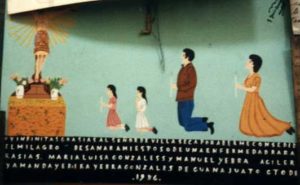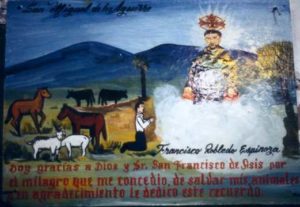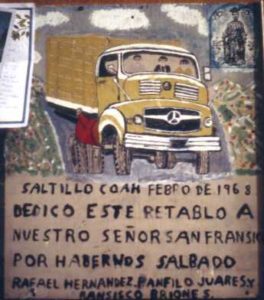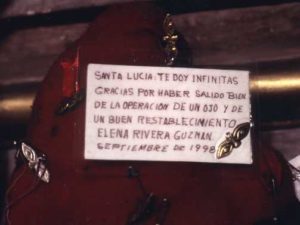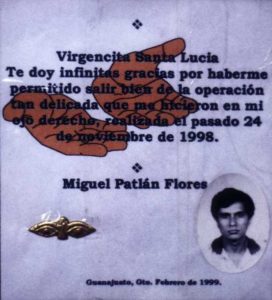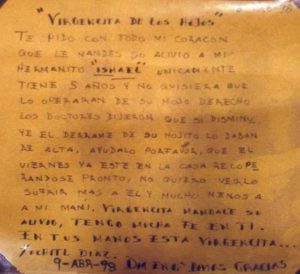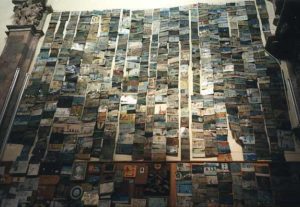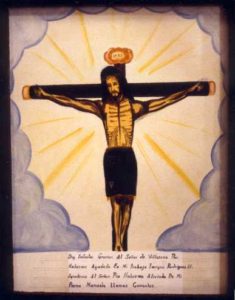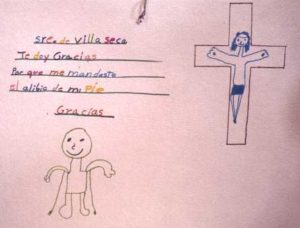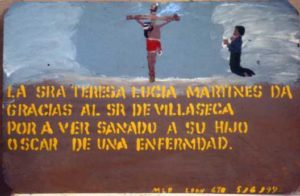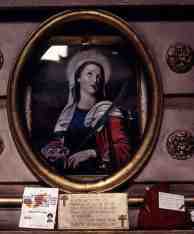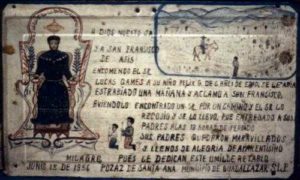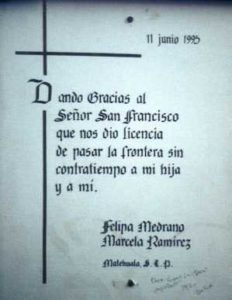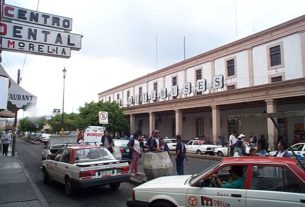Exvoto is a Spanish word meaning votive offering. My English dictionary says that the word comes from the Latin, meaning “out of a promise or vow” and that these votive offerings are given or dedicated in fulfillment of a vow or pledge, or expressing a wish, desire, or vow. In Mexico, an exvoto is most commonly a personal thank you note to God, often taking the form of folk art. In most cases, the exvoto is signed and dated, and explains why the giver is giving thanks – what God did for him or her. In many cases, they tell a very touching personal story. The personal story is what makes them so fascinating. The exvoto is most often left at a church altar. They are very public, yet very personal, professions of faith in God and thanks for favors received.
The most common reason for thanks is health, with many exvotos dedicated after operations. Survival of accidents is a close second. But almost any subject is sufficient to justify creating one, from finding a missing child or mule, to fixing a leak in a stock pond.
The concept of a votive offering has been around for thousands of years. The earliest reference that I have found dates back to the 5th century BC, an offering to Apollo at Delphi. Hernan Cortez, the conquistador of Mexico, had an elaborate exvoto created to give thanks for his survival from the bite of a scorpion. This exvoto was made of gold and emeralds.
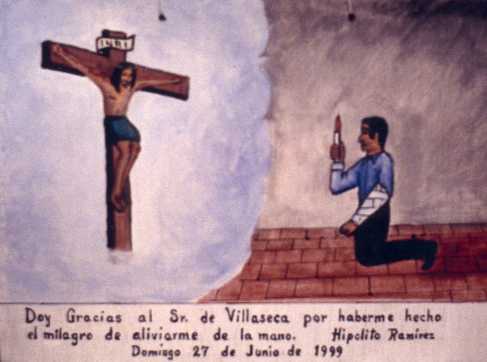
The form that we see today began in Italy in the 15th century, when artists were commissioned to produce painted exvotos. This concept spread rapidly through Europe and the Americas, and was not limited to the upper classes. The first painted exvoto in Mexico dates from 1592. Exvotos from this period generally include a picture of the saint, a picture of the donor, and the name of the donor, but little detailed textual information.
In Mexico, the painted exvoto may sometimes be called a retablo, although the word retablo is probably best reserved for the sacred images painted on wooden panels behind altars.
When many people think of exvotos in Mexico, they think of those painted on tin or sheet metal. This use of tin started in the 19th century. These exvotos are generally around a foot in length, and were often painted by a local artist or artisan for the giver, who may not have been able to read and write. In contrast, most Mexican exvotos have a detailed explanation of why the donor is giving thanks. Sr. Durand indicates that the collection of exvotos by museums started in the middle of the 19th century, as representative pieces of art and popular culture.
Modern exvotos are frequently made on paper, and often have the look of children’s art, most likely designed and created by the giver. They may include photographs, or even photocopies. It is not at all unusual to see one that is simply a photocopy of a graduation certificate from secondary school or even medical school.
Today, exvotos are not as common around the world as they were hundreds of years ago. But they are still found in Spain and other countries. For example, a web search revealed that in Galicia, Spain, one of the local forms of handicrafts is an exvoto cast from wax, often of a body part. In Santo Domingo, the metal exvoto is the most common.
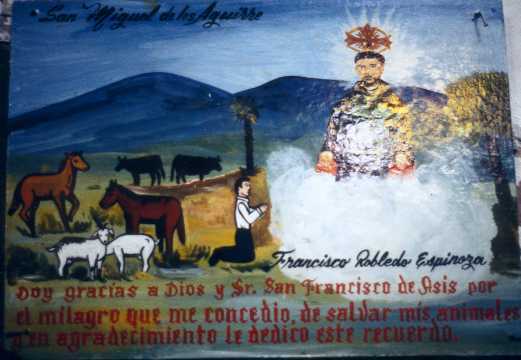
Exvotos are found in nearly all Mexican churches. The photos here were taken in Cata, Guanajuato, the city of Guanajuato, and Real de Catorce, San Luis Potosi. The church in San Juan de Los Lagos, Jalisco, is reported to contain many exvotos. Look around the next time you are in a church in Mexico, you may find some exvotos on a side altar. In some churches, you may find only a few, while other churches have hundreds. In Cata, the walls of the church were covered to a height of 20 feet with exvotos.
In a secular society, people do not generally think of God in terms of having much direct impact on their lives. For the Mexicans who create and post exvotos, God is very much alive, helping them in their times of crisis. The exvoto is an expression of faith, a public thank you note to God, a reflection of popular culture, and a form of folk art.
In my mind, the exvoto is a fascinating reflection of the unique culture of Mexico. I encourage you to look at the photo galleries below, and look for exvotos whenever you visit a Mexican church or shrine. Exvotos are fascinating part of the unique culture of Mexico.
(In these Photo pages, all images are linked to enlargements. Just click!)
- Los Exvotos, Vida y Milagros de los Mexicanos, por Jorge Durand, Universidad de Guadalajara. Publicado en 1995 por el Centro de Investigaciones de San Luis Potosi, AC

